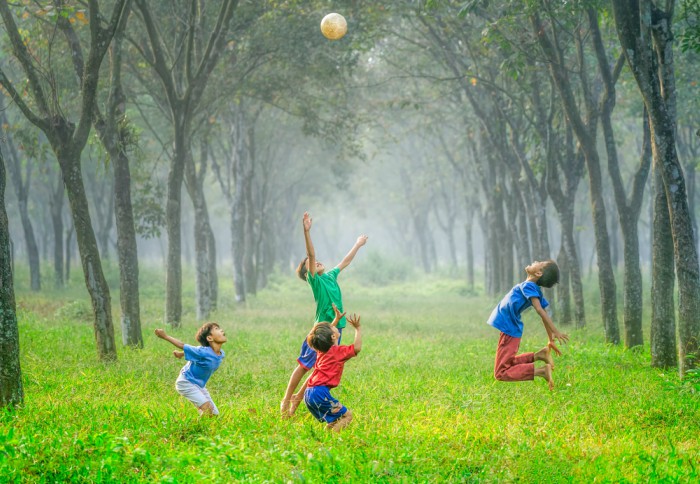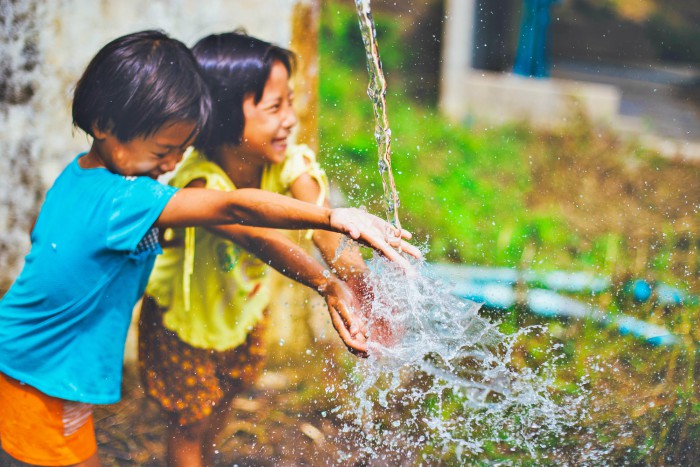It’s a well-worn phrase that we’ve all heard and plenty of us have said: Kids today are wrapped up in cotton wool and not allowed to be kids anymore. People talk about the good old days, when children would be out playing in the woods all day long throughout the school holidays, without an adult or a mobile phone in sight, and would not be home till nightfall. Today, there would be widespread panic and a police search.

Obviously, there’s a touch of the rose tinted glasses phenomenon going on, but there’s no doubt that there’s more than a hint of truth about it. I can’t help but wonder if instead of complaining about how terrible everything is and going on about days gone by, we would be better off doing more to give our children the street smarts and knowledge to keep themselves safe.
After all, as well as increasing their safety today as children, it is worth bearing in mind that today’s children are tomorrow’s workers, and they will need to know how to look after themselves sooner or later. Maybe parents and teachers need to do more to give them a better grounding in how to assess risks and understand hazards. For example, this safety sign company lists a huge variety of different signs. Maybe simple things such as teaching children what they mean would make a difference.
Workplace injuries among young workers
According to statistics from the HSE, there were 137 fatalities at work in the UK over the past year. Those numbers are very low compared to places like the USA and Canada, but the alarming part is that a high proportion of them were among two groups: The self-employed and young workers. The situation is very similar in Australia. Fortunately, legal action is very forthcoming down under and aggressively pursues negligent employees who are responsible for causing injuries to their young workforce. Check out this great website which covers personal injury law.
That tells us two things: Firstly, if inexperienced young workers are more likely to have a fatal injury, it suggests that staying safe is something that is learned more on the job than before it, especially if you work in an environment that requires a lot of health and safety training beforehand. In such situations, workplaces must adopt all safety measures that are imposed by their local communities. Going the extra mile and installing safety devices like a natural gas leak detector, for instance, could be a tactical option for those places that handle chemicals and other gases that can cause harm to the body. And, regardless of how much training you have though, even the most experienced workers are susceptible to an injury; it just comes with the territory of certain jobs. Luckily, places similar to Johnson Law Firm can help anyone who has suffered from a workplace injury to file a compensation claim so they can get back on their feet. That’s why people should always learn how to stay safe on the job, regardless of what they do.
The point about self-employed is even more sobering, though. When you start a new job, the first thing that happens is always a safety briefing. It might be 20 minutes long for an office job, or take several days in an oil refinery. People complain about having to go through it, but the statistics don’t lie – the self employed don’t go through this basic training in health and safety, and they are twice as likely to die at work. Businesses can also make their employees aware of the various health and safety concerns and hazards by using hazard information signs that clearly explain and point out the dangers. Check out this UK supplier to see the sort of signs that they have available for this use.

Health and Safety education
The government has brought in a variety of measures to encourage schools to educate children on aspects of safety and risk, and of course there are aspects of this in some of the statutory subjects, like cookery, science, design and technology, PE and so on. But I can’t help thinking that teaching them how to operate a Bunsen burner without burning the school down or set up a trampoline safely is not really going far enough.
Educating children about risk awareness could save their lives when they become adults, and could also bring benefits while they are still children. Surely if we seriously want our kids to have more independence like the “good old days,” during the school holidays, we should be giving them the tools and skills to manage their own safety responsibly.